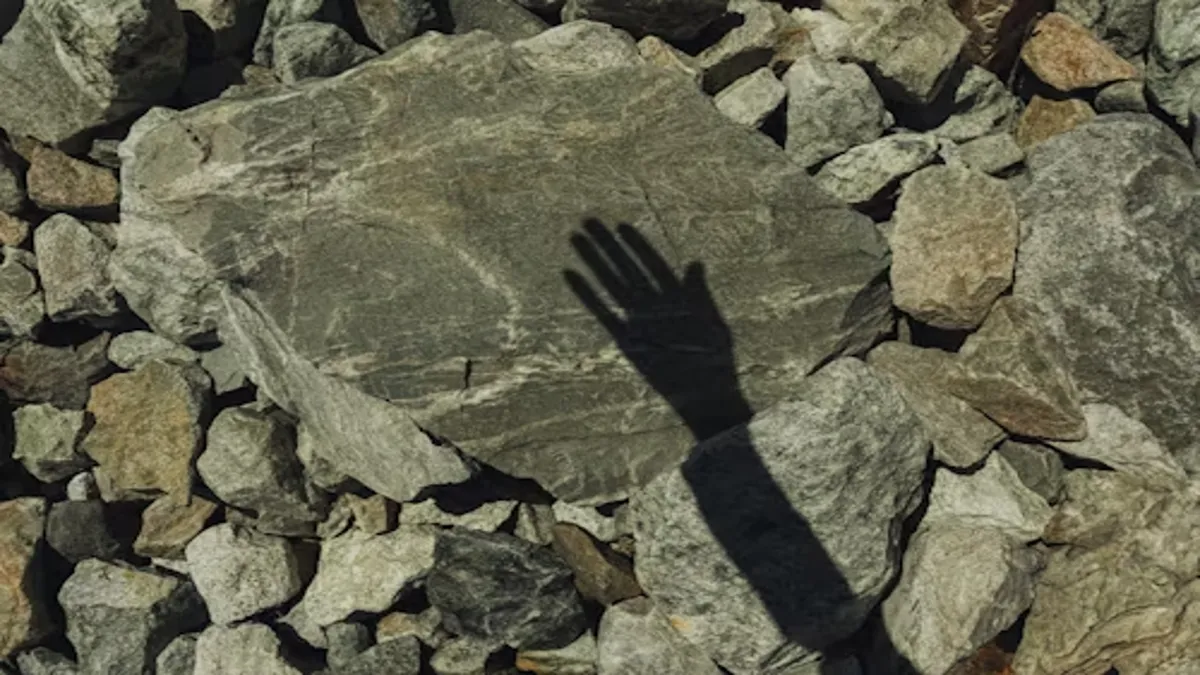In the spring of 2003, a young mountaineer named Aron Ralston entered the Utah desert on what he thought would be a routine solo adventure. Within the first hundred words, readers learn the crux of his story—Ralston became trapped by an 800-pound boulder in Bluejohn Canyon, forced to amputate his own arm to survive after six days of isolation. His tale, later immortalized in the film 127 Hours, transcends the boundaries of outdoor survival and delves into psychology, willpower, and transformation. This article traces Ralston’s life before, during, and after the ordeal, exploring not only how he survived but how his story continues to shape modern perceptions of endurance, risk, and resilience. Over 3,000 words, we follow the man who turned tragedy into triumph and pain into purpose – aron ralston.
Early Life and Love for the Wilderness
Aron Ralston was born in 1975 in Marion, Ohio, and raised in Colorado, where the Rockies became both his playground and his classroom. He was the kind of child who collected maps instead of toys, fascinated by elevation lines and unexplored canyons. After earning a mechanical engineering degree from Carnegie Mellon University, he joined Intel as a process engineer. Yet the call of the outdoors proved louder than the hum of silicon wafers. Ralston left his corporate life in pursuit of mountains—climbing Colorado’s Fourteeners, biking remote trails, and teaching himself wilderness survival. Friends described him as meticulous, adventurous, and intensely self-reliant. “He wasn’t reckless,” one climbing partner recalled. “He was methodical—every move calculated, every rope double-checked.” That precision would later become his lifeline.
Into the Canyon: The April 2003 Expedition
In late April 2003, Ralston set off alone for a weekend of canyoneering near Moab, Utah. The weather was perfect, the terrain rugged and silent. He packed climbing gear, a small amount of food, a few liters of water, and a camcorder—a habit born from his love of documenting the beauty of remote landscapes. He didn’t tell anyone exactly where he was going, assuming he’d be back by Monday. But on April 26, as he descended into Bluejohn Canyon, disaster struck. A suspended boulder shifted unexpectedly, crushing his right hand and pinning it against the canyon wall. The fall was not dramatic; the aftermath was. Alone, trapped, and miles from any trailhead, Ralston faced the unimaginable.
The Six Days of Survival
For the next six days, Ralston fought to stay alive. His supplies dwindled. He rationed sips of water, eked out bites of his meager food, and tried repeatedly to move the boulder—each attempt a mixture of physics and desperation. He recorded video messages for his family, confessing love and regret. By the third day, dehydration and cold had begun to take their toll. His mind oscillated between lucidity and hallucination. “I didn’t feel fear anymore,” he later said, “just a profound sense of awareness. Every sound, every shadow had meaning.” When he realized no one would find him in time, he began to contemplate the unthinkable: amputating his trapped arm to free himself.
The Decision to Survive
The decision came not from panic but clarity. On the sixth morning, after days of failed attempts with a dull multitool, Ralston found a way—by breaking the bones of his arm against the rock before cutting through soft tissue. It was an act of both horror and transcendence. “It wasn’t about pain anymore,” he told interviewers later. “It was about life.” With a crude tourniquet fashioned from his climbing gear, he rappelled down a 65-foot cliff one-handed and began hiking out of the canyon, leaving behind both part of his body and the boundaries of human endurance.
Rescue and Recovery
Hours later, weakened and blood-depleted, Ralston encountered a family of hikers from the Netherlands who gave him water and alerted authorities. A rescue team airlifted him to safety. The amputated arm was later recovered—still wedged in the canyon that had become his crucible. Recovery was slow but determined. Within three months, he was climbing again, outfitted with a prosthetic arm designed for gripping climbing gear. His story spread rapidly, turning him into both a hero and a symbol of survival psychology. In interviews, Ralston maintained that the experience was less about loss and more about revelation: “I didn’t lose an arm. I gained a second chance.”
Anatomy of Endurance
Psychologists studying extreme survival often cite Ralston’s ordeal as an example of what they call adaptive focus—the mind’s ability to narrow its awareness to actionable steps under life-threatening pressure. His engineering background, problem-solving instinct, and endurance training converged in those critical hours. Survival experts often compare his resilience to those of explorers and soldiers trained for crisis. Yet Ralston’s ordeal was unique in its isolation. He had no backup team, no communication, no external motivator except the primal will to live. In a world increasingly defined by connectedness, his story remains a meditation on solitude’s power to reveal human limits—and transcend them – aron ralston.
From Survivor to Storyteller
Ralston’s 2004 memoir, Between a Rock and a Hard Place, chronicled his experience with candor and philosophy. The title itself became part of popular vernacular, symbolizing impossible choices. In 2010, director Danny Boyle adapted the book into the Oscar-nominated film 127 Hours, starring James Franco. The movie captured not just the physical ordeal but the spiritual transformation Ralston underwent. In one of the film’s most haunting sequences, he imagines his future son—a vision that gave him the final push to act. The moment mirrored reality; years later, Ralston became a father. His lectures and appearances now emphasize not the gruesome act but the inner journey toward self-understanding and gratitude. “Freedom,” he often says, “isn’t about avoiding risk—it’s about embracing purpose.”
Lessons from the Canyon
| Aspect of Experience | Challenge Faced | Lesson Learned |
|---|---|---|
| Physical | Loss of limb, dehydration, isolation | The body adapts beyond perceived limits |
| Mental | Despair and decision-making under stress | Focus replaces fear when purpose is clear |
| Emotional | Loneliness and regret | Connection and gratitude become survival anchors |
| Spiritual | Facing mortality | Acceptance transforms suffering into meaning |
These lessons transcend outdoor survival; they apply to leadership, resilience, and everyday adversity. Ralston’s experience became a blueprint for how to convert crisis into clarity – aron ralston.
Life After the Canyon
After his recovery, Ralston returned not to safety but to challenge. He completed his goal of climbing all 59 of Colorado’s peaks over 14,000 feet—solo. He led expeditions across North America and the Andes, often speaking about balance, humility, and preparedness. Public appearances evolved into motivational talks, blending raw honesty with practical philosophy. “People think my story is about amputation,” he said in one TED Talk. “It’s really about choosing life—even when it’s terrifying.” Beyond adventure, Ralston devoted himself to advocacy for wilderness preservation and responsible solo travel. He emphasizes planning, communication, and the ethics of risk—reminding fellow adventurers that solitude doesn’t mean secrecy.
Cultural Impact and Media Representation
Ralston’s story reverberated across media platforms, reshaping how society interprets courage. In the years following 127 Hours, survival narratives—from climbers on Everest to sailors lost at sea—were often described through his lens. His blend of vulnerability and strength struck a cultural chord, balancing masculine grit with emotional openness. The film’s graphic realism forced viewers to confront the physicality of survival while appreciating the serenity that follows acceptance. Universities, rescue organizations, and even military programs now reference his ordeal as a study in decision-making under duress. As one reviewer wrote, “Aron Ralston didn’t just survive the canyon—he redefined what it means to face oneself.”
Quotes that Define His Philosophy
“May your boulders be your blessings.”
“I used to think freedom was about no boundaries. Now I know it’s about living within the truth of your own choices.”
“I walked out of that canyon not as a victim, but as someone reborn into gratitude.”
Each quote encapsulates a shift from suffering to self-realization, reminding audiences that courage is rarely loud—it’s the quiet clarity that comes when there’s no other choice.
Lessons for Modern Adventurers
Today’s adventurers operate in an era of GPS, satellite beacons, and constant connectivity, yet Ralston’s story endures as a warning and an inspiration. Solo travel, while romanticized, demands discipline and respect for nature’s unpredictability. Experts encourage communication plans and backup systems. As Ralston himself notes, “Preparation doesn’t kill adventure—it keeps it alive.” His lectures often include demonstrations of modern emergency gear, stressing that technology should serve awareness, not replace it. His advocacy has led to partnerships with search-and-rescue groups and outdoor brands that prioritize safety education alongside thrill-seeking – aron ralston.
A Framework for Resilience (Bullet Section)
- Acceptance: Recognize reality instead of resisting it.
- Focus: Narrow decisions to actionable, immediate goals.
- Creativity: Use available resources in unconventional ways.
- Faith: Maintain belief in meaning beyond pain.
- Connection: Remember the people who anchor purpose.
- Preparation: Train not only the body but the mind for adversity.
These principles, distilled from Ralston’s ordeal, now form the backbone of many resilience-training programs in both corporate and wilderness contexts.
The Symbolism of the Canyon
Canyonlands National Park, once a remote backdrop to a personal tragedy, has become a pilgrimage site for climbers and tourists. Some visit out of curiosity; others see it as a place of reflection. The boulder itself, still lodged in Bluejohn Canyon, remains both physical artifact and metaphor. It stands for immovable hardship—and the revelation that transformation begins when resistance ends. “That rock,” Ralston has said, “was always waiting for me. It was my fate to meet it, to change, and to continue.” His acceptance reframes fate not as cruelty but as opportunity for awakening.
Table: Timeline of Key Events in Aron Ralston’s Life
| Year | Event | Significance |
|---|---|---|
| 1975 | Born in Marion, Ohio | Early exposure to outdoor life in Colorado |
| 1997 | Graduates from Carnegie Mellon University | Begins engineering career at Intel |
| 2002 | Quits corporate job to pursue mountaineering | Commitment to outdoor exploration |
| 2003 | Trapped in Bluejohn Canyon for six days | Survival event that redefined endurance |
| 2004 | Publishes Between a Rock and a Hard Place | International acclaim as author and speaker |
| 2010 | Film 127 Hours released | Global recognition and renewed awareness of safety |
| 2012–present | Motivational speaking, fatherhood, activism | Continued influence on resilience and environmentalism |
This chronology encapsulates a life shaped not by catastrophe but by the conscious transformation that followed.
The Philosophy of Risk
Risk, for Ralston, is not recklessness—it’s engagement. He differentiates between danger sought for thrill and risk embraced for growth. “The outdoors doesn’t owe us safety,” he once said. “It offers truth.” That truth, often uncomfortable, teaches humility and perspective. In his view, calculated risk connects humans with their primal instincts, reminding them that control is an illusion but choice is not. Such philosophy resonates beyond climbing walls—into leadership, recovery, and personal transformation – aron ralston.
Influence on Psychology and Leadership Studies
Ralston’s survival narrative has found surprising application in fields like leadership psychology and trauma recovery. Universities use his case to teach adaptive thinking and stress management. Business schools analyze his decision process as a model of crisis leadership—balancing logic, emotion, and values. His approach—acknowledge, adapt, act—mirrors frameworks used in emergency management and behavioral training. As psychologist Dr. Lila Porter notes, “Ralston’s power was not extraordinary strength but extraordinary focus. He teaches that courage is attention, not aggression.”
Personal Life and Continuing Journey
After his survival, Ralston married and became a father, fulfilling the vision that sustained him in the canyon. Parenthood deepened his appreciation for connection and vulnerability. Though his marriage ended in 2013, his commitment to family and nature remained central to his identity. He continues to climb, kayak, and ski, adapting his prosthetic arm to various challenges. Beyond physical feats, Ralston has expanded his mission to include climate awareness and land conservation, arguing that “preserving wild spaces isn’t nostalgia—it’s necessity.” His life after trauma demonstrates that resilience is not recovery alone; it’s reinvention.
Frequently Asked Questions (FAQs)
1. What motivated Aron Ralston to cut off his arm?
After being trapped for six days, dehydration and isolation forced Ralston to accept that rescue was unlikely. Realizing that death was imminent, he chose amputation as his only means of survival.
2. How long was Aron Ralston trapped?
He was pinned in Bluejohn Canyon for approximately 127 hours—just over five days—before freeing himself and hiking to safety.
3. What happened to his arm after the rescue?
Authorities later retrieved the arm, still trapped under the boulder. Ralston arranged for it to be cremated and symbolically returned to the canyon.
4. Did he continue mountaineering after the accident?
Yes. Ralston not only returned to climbing but completed all of Colorado’s Fourteeners solo, proving that determination transcends physical limitation.
5. What message does Ralston share today?
His central message is one of gratitude, awareness, and courage—urging people to face life’s “boulders” with preparation and purpose rather than fear.
Conclusion: The Human Spirit, Unbroken
Aron Ralston’s story endures because it bridges the extremes of human experience—pain and triumph, solitude and connection, loss and renewal. What began as a tale of survival has evolved into a meditation on choice and gratitude. His canyon was literal, but everyone, he reminds us, faces metaphorical boulders—moments when life demands transformation. Through his ordeal, Ralston taught the world that endurance is not defiance but acceptance, not heroism but humility. More than two decades later, his words still echo through the canyons of human consciousness: the power to survive lies not in strength alone, but in the courage to act when every other option has fallen away – aron ralston.







